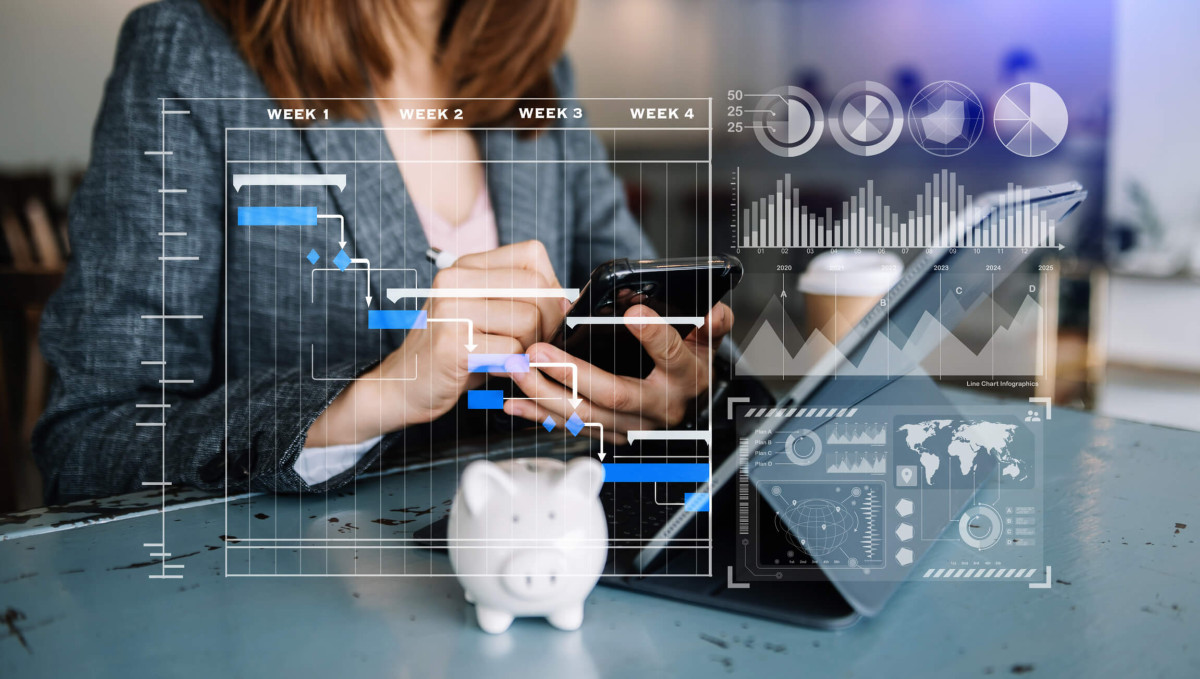FCPI: what returns can we expect in 2025?

Le FCPI (Fonds Commun de Placement dans l’Innovation) soutient les petites et moyennes entreprises et donne des avantages fiscaux aux investisseurs. Ce placement, créé en 1977 permet de réduire l'impôt sur le revenu jusqu'à 18%, et même 25%. Il peut aussi exonérer les plus-values à condition de conserver les parts au moins 5 ans (BPI France, 2024).
FCPIs have raised nearly 12 billion euros since their creation. A large portion has also been directed towards sectors such as health, technology and renewable energy.
As 2025 looms, questions are being asked about the potential returns of FCPIs. Especially since the economic context is marked by global uncertainty and increased innovation dynamics. Their historical average returns generally fluctuate between 2% and 6% per year. Exceptional performances of up to 10% or more have also been recorded over certain periods.
What are the return prospects for 2025? What are the economic developments and risks inherent in this type of investment? What are the opportunities offered by innovative SMEs? The answers are in this article.
The FCPI: a tool for tax exemption and financing of innovation
How do FCPIs work?
FCPIs channel investments towards innovative European SMEs. These companies are usually located in sectors with high added value. Reference can be made to new technologies, health or renewable energies.
How does it work? Between 70% and 100% of the funds collected will be invested in these companies in the full development phase. The risk is considerable but the system is potentially profitable.
Investors must also respect a commitment to keep the shares for a minimum period of 5 years. This holding period allows you to benefit from substantial tax advantages. Capital gains and dividends generated by investments may be exempt. They remain nevertheless subject to social security contributions of 17.2%.
Investors will then be able to optimize their profitability. They will also have the opportunity to support the most promising companies from a technological and innovative point of view.
Tax attractiveness
In 2024, investors can benefit from an income tax reduction of up to 18% of the amount invested. The annual ceiling will be €12,000 for a single person and €24,000 for a couple.
Social and solidarity economy companies (ESUS) are often prime targets for FCPIs. They can benefit from more advantageous tax exemptions of up to 25%, until the end of 2025.
These tax reductions must however take into account the limits of the tax loophole cap, set at €10,000 per year and per tax household. The overall amount of tax reductions that can be obtained through investments in FCPIs will be limited. This is despite the advantages they offer.
Recent statistics
The appeal of FCPIs remains stable and is supported by an ecosystem of regular investors. In 2022, fundraising for these investments reached €256 million.
The average subscription amount is €6,920. There are currently around 53,000 investors. This number has remained relatively stable since 2018.
The FCPI remains one of the most popular tax exemption tools in France. It is particularly suitable for those who wish to support innovation and tax optimization.
Past returns and performance of FCPIs
Historical returns
FCPI returns have varied greatly over the years. During certain periods, performance has not lived up to expectations. Between 2000 and 2010, the returns of a large portion of the funds were often lower than the initial investment for 50% of the funds. We note here that this type of investment presents a fairly high risk.
The FCPI invests mainly in innovative SMEs, often in the development phase. Performance may fluctuate. The maturation process of the companies in which these funds invest can however be long and uncertain. The probability of bankruptcy is relatively high in certain industries.
Some funds, however, have outperformed, particularly in innovative sectors such as technology and biotechnology. These sectors have seen explosive growth, driven by the rise of new technologies and medical advances.
Startups like Doctolib or Blablacar have had impressive success. They have transformed FCPI investments into very high returns for investors who placed their money in these companies at an early stage.
Impact of fees
The fees associated with FCPIs can have a significant impact on the net performance of investments. In general, entry fees for FCPIs are between 4% and 5%. A significant portion of the investment will therefore be immediately affected by these initial fees.
Annual management fees generally range between 3% and 4%. Over a 10-year period, they can represent between 30% and 40% of the outstanding amount. This reduces the net return for the investor. This factor must be taken into account when analyzing the long-term profitability of FCPIs, because even relatively good performance can be canceled out by excessive fees.
Recent regulation has helped improve the transparency and competitiveness of fees. Since 2017, approved Local Investment Funds (FIPs) have been subject to a fee cap of 30% of the outstanding amount. They thus reduce the impact of costs on the overall return of the fund. They share similar characteristics to FCPIs.
What returns can we expect in 2025?
Economic context and innovation in 2025
The year 2025 is set to be marked by technological innovation and the energy transition. Strategic sectors also continue to drive the global economy. These include artificial intelligence (AI), digital health and the energy transition. They are promising growth drivers.
To support these transformations, the French government has put in place mechanisms such as the France 2030 Plan. It provides for massive investment in the innovation sectors.
This plan should be financed via Bpifrance. This is a public institution responsible for supporting innovation and SMEs.
2025 Performance Scenarios
|
Scenario |
Description |
Expected performance |
|
Low hypothesis |
Global economic slowdown with persistent inflation or moderate recession. Difficulty for SMEs to grow, rising borrowing costs. |
2% to 3% |
|
Median hypothesis |
Moderate growth in innovative sectors, supported by public policies and a relatively favorable financial environment. |
4% to 6% |
|
High hypothesis |
Strong growth of SMEs in sectors driving innovation, such as AI and digital health, supported by fundraising and investments. |
7% to 10% |
Data and statistics
To better assess the returns of FCPIs compared to other risky investments, they will need to be compared with similar financial products.
Equity funds or equity savings plans (PEA) have average returns generally between 5% and 7% per year over the last few decades. However, these returns can fluctuate depending on:
- stock market cycles,
- economic crises,
- selected investment sectors.
In comparison, FCPIs are riskier investments . However, they offer a higher return potential due to their exposure to young and innovative companies. They also have attractive tax advantages. They are therefore a very interesting option for investors willing to accept high volatility. The counterpart will be tax reductions and diversified cutting-edge sectors.
How to choose a high-performance FCPI in 2025?
Choosing a high-performing FCPI in 2025 requires an approach that takes into account several important factors. These criteria vary depending on the investor's priorities. This may include potential profitability, risk management or taxation.
To optimize the performance of your investment, you will need to carefully evaluate the different aspects of FCPIs. In particular:
- investment sectors,
- the reputation of managers,
- associated costs,
- analysis of financed SMEs.
Selection criteria
Investment sectors
In 2025, some sectors have a higher growth potential than others. The biotech, green tech and deep tech sectors are particularly interesting choices:
Biotech
Innovation in biotechnology continues to advance. Medical treatments, gene therapies and personalized medicine have evolved significantly. Investments in technologies that improve public health are encouraged (especially in Europe).
Green tech
Sustainable development and energy transition are currently global priorities. Technologies related to renewable energy, waste management, energy efficiency and carbon capture technologies are very profitable. Public policies are strongly in favour of them.
Deep tech
This is the sector of advanced technologies. They are generally related to artificial intelligence, the Internet of Things (IoT), robotics or quantum technologies. These innovations have a strong disruptive potential and the industrial future may depend on them.
You will be able to benefit from the dynamism of these fast-growing industries if you choose an FCPI invested in these innovative sectors. The risk will be calculated and the return opportunity will be potentially high.
Reputation and history of fund managers
The competence and reputation of fund managers play an important role in the performance of an FCPI. It is necessary to check their management history, in particular their performance history in similar contexts.
Managers with proven experience in innovation sectors are better able to identify growth opportunities. They can also better manage the challenges inherent in investing in high-growth SMEs.
You need to ensure that the manager has a rigorous approach to selecting companies. He must put in place a clear strategy for risk management.
You can also consult feedback from other investors or financial analysis reports. This will help you assess their ability to generate value over the long term.
Assessment of fees and conditions
Fees to compare to maximize net return
Costs have a direct impact on the net return on your investment. Entry fees can range from 4% to 5%. Annual management fees, on the other hand, typically range from 3% to 4%.
These amounts should be compared between different funds. Even a modest difference in fees can have a significant impact on the final performance over several years. Choose funds that have reasonable costs and guarantee professional and quality management.
It is also important to check the exit fees, especially in the event of early withdrawal. Some FCPIs impose penalties if the shares are resold before the mandatory retention period, generally 5 to 10 years.
Specific conditions related to each fund
Each FCPI has specific conditions regarding the subscription period, investment horizon and liquidity conditions. The chosen fund must correspond to your investor profile and your financial objectives.
If you are looking to obtain immediate tax reductions, the fund will need to be subscribed within the specified time frame. Some FCPIs may be more suitable for investors who are looking to the long term. The blocking period for the shares will be 5 to 10 years.
Analysis of financed SMEs
Innovative qualification via Bpifrance
To select a successful FCPI, you need to look at the innovative SMEs in which the fund invests. In France, Bpifrance finances companies that develop technological innovations. You can check whether the FCPI selects companies that benefit from the Bpifrance qualification.
It is a label that guarantees that the company meets certain innovation criteria. Companies thus qualified are often well positioned to benefit from public subsidies and access to specialized financing.
Economic development and profitability prospects
The growth prospects of SMEs financed by the FCPI will need to be assessed. This includes the analysis of:
- their economic model,
- their positioning on the market,
- the viability of their projects.
If the companies in which the fund invests are well positioned to capture increasing market share, they will have a greater chance of generating substantial revenues and optimizing the value of investments.
The fund manager must provide detailed information on the business development plan and the profitability targets to be achieved. He will also take into account the specific risks associated with each SME (competition, regulation and solidity of the business model).
Risks associated with investing in FCPI
Investing in an FCPI also involves risks that must be assessed before committing.
Unavailability of funds
The life of the funds in an FCPI generally extends from 8 to 10 years. During this period, it is impossible to recover your capital, unless you wait for the liquidation of the fund. This unavailability of capital can be a disadvantage for investors who wish to have rapid liquidity or who anticipate short-term financial needs.
Some FCPIs provide for an extension period (often between one and two years) depending on investment performance and market conditions. It also extends the waiting period before exiting the fund. The investor will not be able to recover his capital before the fund is liquidated. This can lead to frustrations, especially in the event of urgent liquidity needs.
Capital loss
FCPIs invest in unlisted SMEs and in innovative sectors, often in the development or research phase. These companies, although promising, may encounter difficulties and not achieve the expected results. This will result in losses for investors.
This type of business presents a high risk due to their uncertainty of development and their vulnerability to market fluctuations.
A study conducted between 2000 and 2010 showed that 50% of FCPIs resulted in capital losses for investors. This is explained by the fact that some SMEs fail to achieve profitability or develop satisfactorily. Others fail to carry out their innovation projects. The lack of liquidity in these companies makes their valuation more difficult. This increases the risk of capital loss for investors.
Impact of high fees
The fees associated with FCPIs can impact the net profitability of the investment. Entry costs can be between 4% and 5%, which represents an initial reduction in the amount invested. Annual management fees generally vary between 3% and 4% of the invested capital, and can represent a significant percentage of the return over the life of the fund.
These high fees can have a negative impact on the investor's net profitability. They are subtracted from the returns generated by investments in SMEs. After several years of management, annual fees can represent between 30% and 40% of the fund's outstanding amount.
If these expenses are not offset by sufficient returns, the investor could see the profitability of his investment reduced. It is therefore necessary to carefully analyze the management and entry fees before choosing an FCPI.
Reserved for large taxpayers
FCPIs are particularly suitable for large taxpayers who want to reduce their income tax. The tax reductions they offer (up to 18% of the amount invested, or even 25% for ESUS companies) are attractive for households subject to high income tax brackets. However, this feature may limit their appeal for moderate-income investors, who do not fully benefit from the tax advantages.
Thus, FCPIs are particularly suitable for those with a high investment capacity and high income. The tax reduction is greater in the higher tax brackets.
Low-income households may not find FCPI investment as attractive. Especially without a long-term strategy and a broader investment portfolio.
Key points to remember
In 2025, FCPI returns could vary from 2% to 10% depending on economic conditions and investment sectors, especially in innovation. An analysis must be carried out before investing, taking into account the selection of funds, the risks inherent in unlisted SMEs and the tax advantages offered.
The assessment of management fees and subscription conditions is also crucial to optimizing the profitability of the investment. It is also strongly recommended to consult a financial or tax advisor. You will thus benefit from support adapted to your profile and your investment objectives.
These articles may also be of interest to you
-

Investir en SCPI à crédit consiste à mettre en face un taux de crédit, un rendement et une fiscalité, et à vérifier que l’équilibre reste favorable dans le temps. Le crédit permet de lisser l’effort d’épargne et de profiter de l’effet de levier, à condition que les loyers et la déduction des intérêts compensent une partie du coût du prêt.
-

Un taux d’emprunt SCPI sur 25 ans permet de lisser les mensualités et de profiter de l’effet de levier du crédit, mais augmente le coût total du financement. Ce montage convient surtout aux épargnants qui voient à long terme, une situation stable et une capacité d’endettement suffisante.
-

Un calculateur loyer SCPI sert à estimer vos revenus locatifs futurs à partir de quelques données clés comme le capital investi, le rendement et la durée de placement. Il permet aussi d’intégrer la fiscalité et, si besoin, un crédit pour approcher au mieux le revenu net réellement encaissé.



